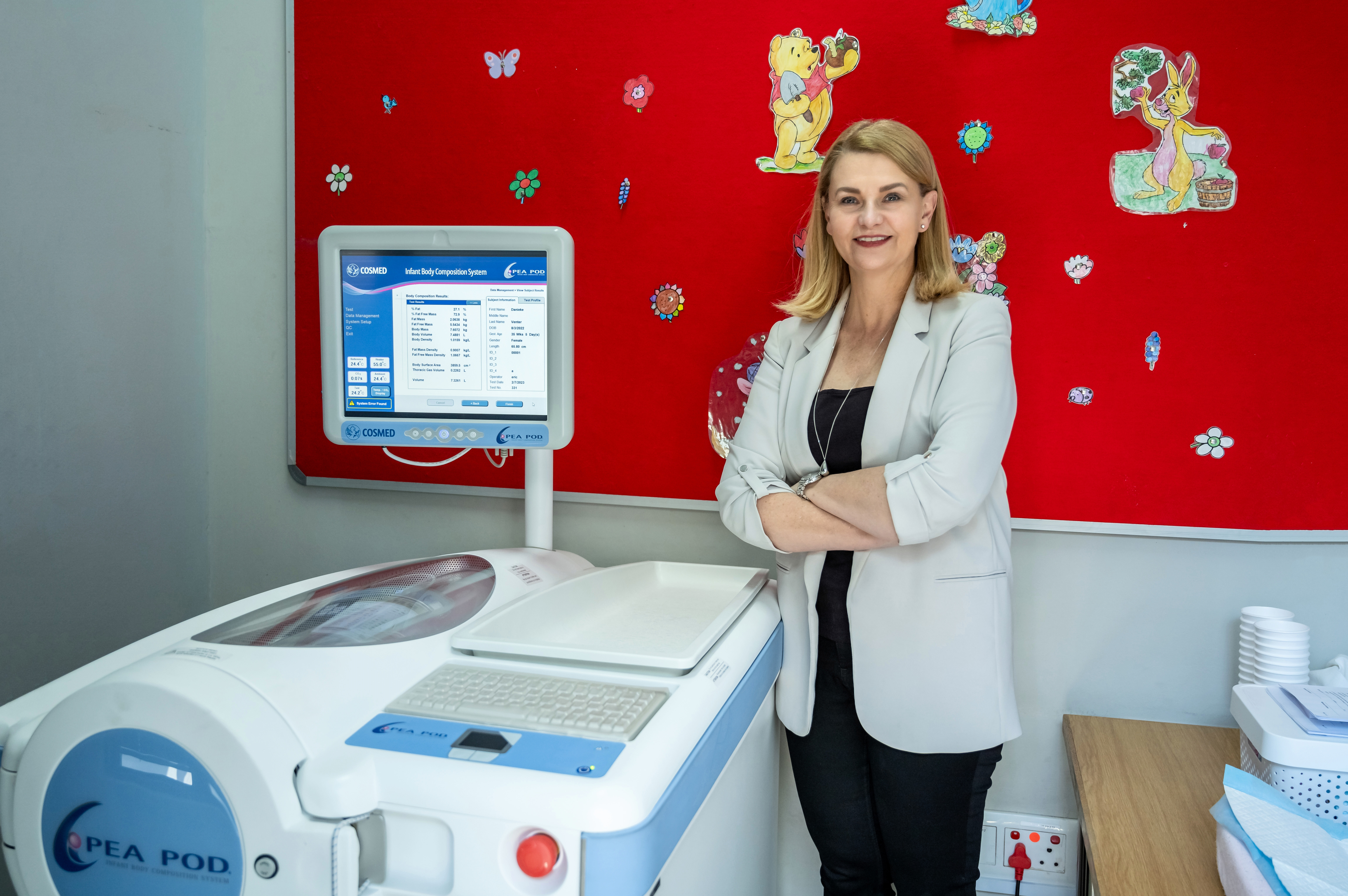25 January 2024
|
Story Leonie Bolleurs
|
Photo Sonia Small
 Prof Corinna Walsh says the PEA POD Infant Body Composition System works by directly measuring an infant’s body weight and volume, and then uses these measurements to calculate the body fat percentage, fat mass, and fat-free mass.
Prof Corinna Walsh says the PEA POD Infant Body Composition System works by directly measuring an infant’s body weight and volume, and then uses these measurements to calculate the body fat percentage, fat mass, and fat-free mass.
Nutritional and growth patterns during early life have been associated with health, development, and well-being throughout the life cycle. It is also associated with risks for developing obesity and non-communicable diseases, such as cardiometabolic diseases, later in life. These are the findings of Prof Corinna Walsh, Professor in the Department of Nutrition and Dietetics.
Maternal and child health
”In line with national priorities, a strong research focus area of the Faculty of Health Sciences and the School of Health and Rehabilitation Sciences is maternal and child health,” she says. She goes on to mention that the Department of Nutrition and Dietetics has established a reputable research programme. This programme focuses primarily on the nutritional status of pregnant women and how the early environment to which they are exposed during and after pregnancy affects short- and long-term health outcomes of the offspring.
“In our previous work, the assessment of birth outcomes of infants was, however, limited by the lack of equipment to analyse body composition. The research that we can conduct with the PEA POD® provides us with immense additional potential,” remarks Prof Walsh.
She explains, “The PEA POD Infant Body Composition System is an infant-sized air displacement plethysmography system. It works by directly measuring an infant’s body weight and volume, and then uses these measurements to calculate the body fat percentage, fat mass, and fat-free mass.
According to her, the assessment of body volume takes two minutes. “The PEA POD technique also does not require collection of any fluids and does not expose the infant to radiation. It can be performed as often as required without any risks and be used up to a maximum of 8-10 kg body weight, from birth to about eight months,” she says.
In the context of research on infant body weight and composition, there is a need for accurate measurement techniques that can differentiate between fat mass and fat-free mass. Prof Walsh is of the opinion that traditional measures such as body mass index (BMI) and weight for length have limitations in this regard, as they do not provide a clear distinction between these components. Furthermore, BMI may not be reliable for assessing adiposity or obesity in paediatric populations, and it can vary significantly with age and gender.
Addressing these challenges, the PEA POD equipment offers advanced technology that allows for highly accurate quantification of infant body composition. This technological capability opens up opportunities to study the effects of early-life nutrition on growth and the developmental mechanisms that may lead to later comorbidities. So, when it comes to researching infant body weight and composition, the PEA POD equipment plays a crucial role in providing precise data and insights.